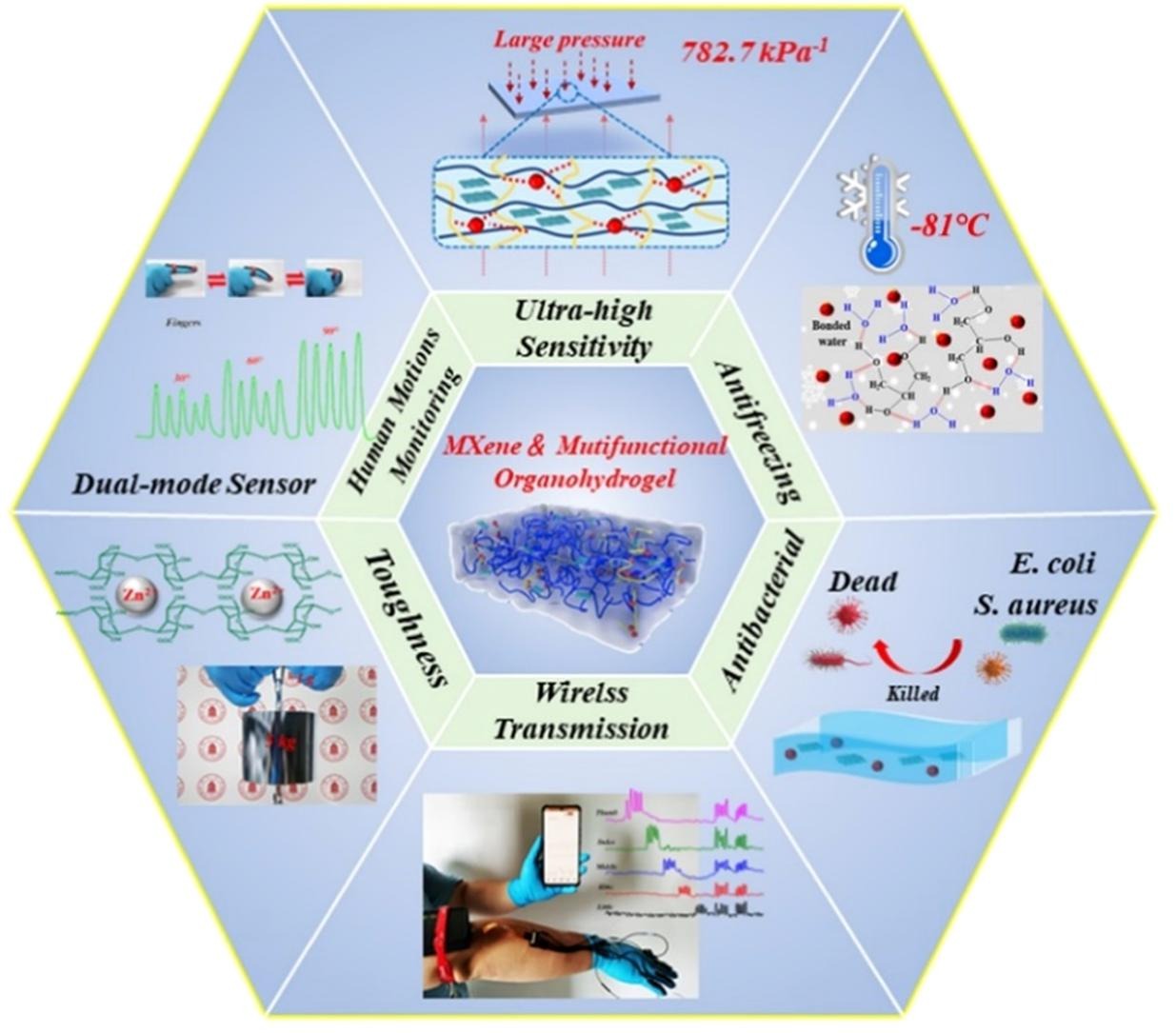Zwitterionic hydrogels have attracted a myriad of research interests for their excellent flexibility and biocompatibility as flexible wearable sensors. It is desired to create E-skins that integrate high mechanical strength, sensory sensitivity, and broad adhesion, possessing potential in the fields of intelligent robots and bionic prostheses. In this work, a novel macromolecular cross-linker (MPU) based on waterborne polyurethane (WPU) was designed and applied to synthesize multifunctional conductive hydrogels (PASU-Zn hydrogels). Importantly, in the presence of MPU, the hydrogels exhibited well-balanced mechanical properties (elongation at break 1193%, tensile strength 1.02 MPa, outstanding puncture resistance, and self-recovery abilities). When assembled as wireless strain sensors, PASU-Zn sensors displayed distinguished sensing characteristics to detect mechanotransduction signals of human movements in real-time. Specifically, owing to the dipole–dipole interaction and hydrogen bonding of zwitterions and MPU, the hydrogels have remarkable self-adhesion properties to various surfaces of wood, PDMS, and pigskin, allowing them to stick to skins by themselves without using any adhesive tapes when used. It is deemed that the as-designed zwitterionic hydrogels show great promise for wearable devices and bionic skins.


